Filming reality for virtual reality is often an outward-looking exercise. With their previous film, SURVIVING 9/11, the French company TARGO reconstructed the New York of 2001. Their latest production, BEHIND THE DISH (in 3 episodes), turns the camera towards a smaller but no less captivating universe: our plates, through the portraits of three women chefs.
BEHIND THE DISH is an ideal end of year movie to excite your taste buds. Just like the documentary series on cooking that you can discover on your screens, watch out for your appetite! Watching the 3 films produced with Meta Quest can challenge your stomach as well as your eyes. As always, TARGO brings its view of the world, and beyond the macro sequences (fascinating captures of the plates prepared by the kitchen teams) takes us on a world tour of flavors. Deciphering with the founders of the company Chloé Rochereuil and Victor Agulhon, also director and producer of BEHIND THE DISH.
BEHIND THE DISH, bon appétit!
Victor Agulhon – BEHIND THE DISH is a project that comes from an old desire. We had a long-standing passion for cooking and culinary programs: whether it was series like Chef’s Table on Netflix or shorter content on Instagram, we were naturally drawn to this universe. In our DNA at TARGO, we’ve always been keen to produce virtual reality experiences for the general public, so creating a documentary about food was an obvious choice for us. It took us a long time to get started because we wanted to find a real added value to virtual reality on this subject, we wanted to offer something really unique and spectacular. It’s when we had the idea to film food very closely in “macro”, in 3D and to give it a gigantic size in VR, that we decided to launch this project.
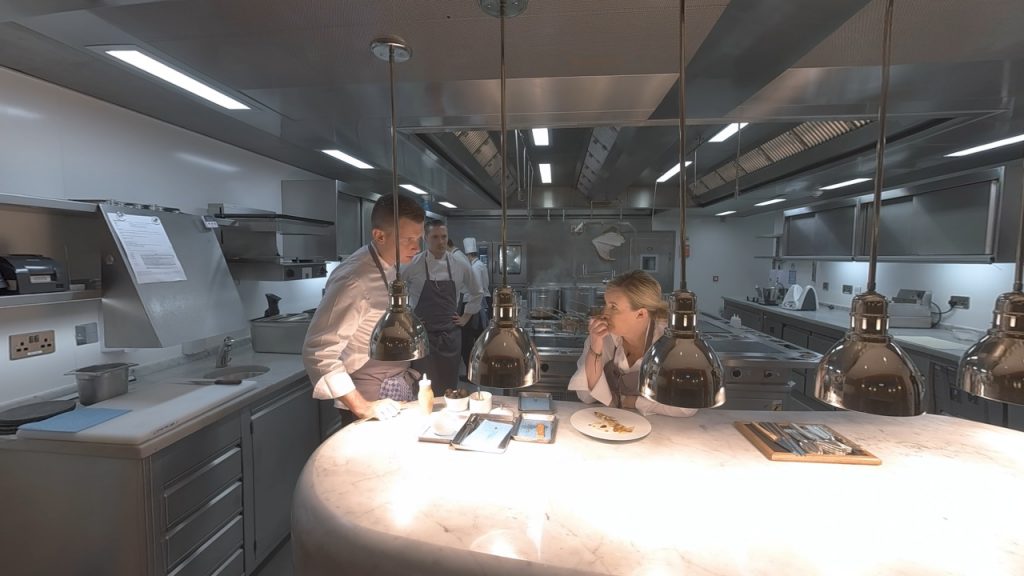
V. A. – What we propose with BEHIND THE DISH is to change the perspective on gastronomy. First, by choosing to tell the story of three women chefs, and then, very literally, by offering unprecedented macro 3D 8K VR images of food: the viewer has the impression of being reduced to the size of an ingredient placed on a plate. Once we consolidated our approach: female chefs, innovative film technology and a world tour of flavors-we quickly proposed the project to Meta. We had already produced 4 projects with this team and we sensed an interest from them. They believed in our vision and offered us total creative freedom.
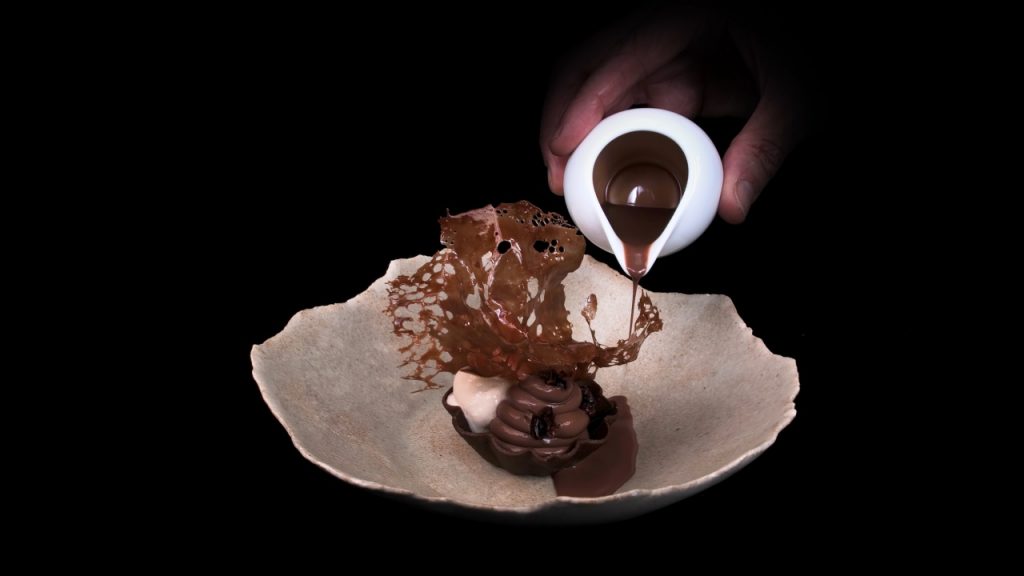
Chloé Rochereuil – Talking about cooking is an exercise that has already been done a lot in audiovisual. With BEHIND THE DISH we wanted to find a different angle to approach this theme in virtual reality. The series proposes an immersion in the dishes thanks to a new technology but also proposes a very affirmed editorial angle. BEHIND THE DISH tells the story of three women with singular destinies who run their own successful kitchens, and with very assertive styles, in France, Japan or the United States. We find our documentary style and our desire to offer real encounters in virtual reality with talented chefs, notably through interviews and an immersion in their daily lives, from the kitchens to the producers. After having made more serious documentaries on historical subjects, we were also happy to be able to offer a lighter content, with a shorter format.
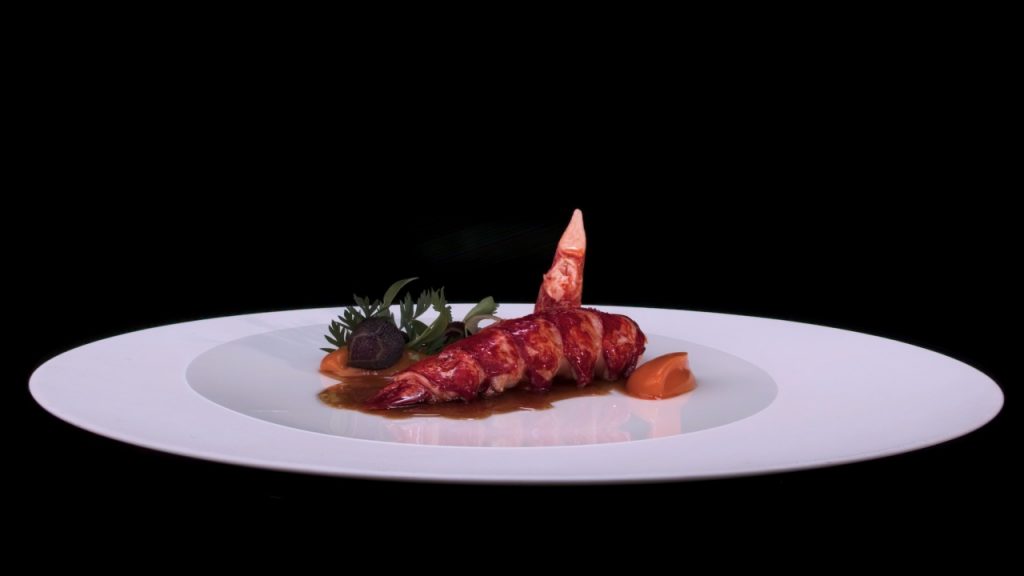
A VR shoot in macro definition
V. A. – Once we had this idea of making food huge in VR, we had to find the technologies that would allow us to make it happen. We considered several approaches: scanning the food in 3D, converting 2D images into 3D… But the only solution that allowed us to get the images we wanted was to create a custom camera rig to play on the sensation of scale in 3D (using hypostereo) and the proximity to the food (macro film). This is what allows us to shoot live, capturing the real thing as close as possible: the gestures of the chefs, the smoke, the dressing of the plates, the sauces that flow… And all in 8K! To be able to show the conception of the dishes and the technicality of the preparation-that was the objective.

C. R. – We were immediately impressed by the quality of the images we were able to produce, in terms of definition and creativity. It was really a viewpoint we had never had on food! With the Quest Pro, the image definition is really close to the real thing. Once we had the technical means in place, we worked on a set up adapted to our camera and our creative ambitions. In order for the set up to be homogeneous in each episode, we chose to shoot on a black background. All the images were captured in the middle of the chefs’ kitchens, which allowed us to be as close as possible to their work and to capture the textures, the smoke that escapes from the hot dish, little things that allow us to offer the spectators a faithful immersion and to almost taste the dishes!
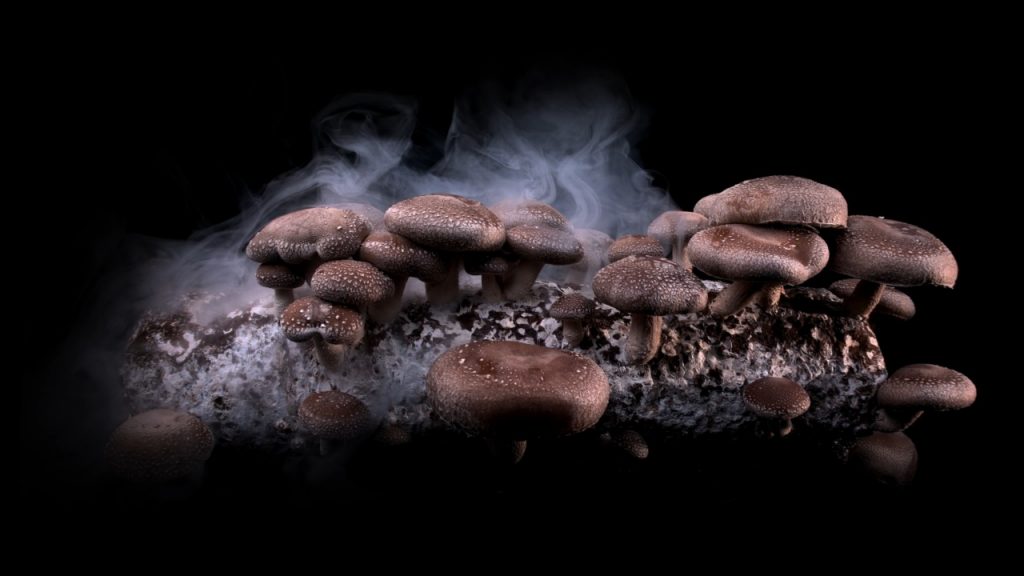
V. A. – One of the challenges was to make this film system compact so that it could travel easily and without a large crew, even if only to fit into cramped kitchens. The finished device fits into two crates, and requires only two people-which was a feat in itself. Then, a lot of lights were needed-to mask the depth of field in particular-but once installed, we could shoot all day and create up to 2 useful minutes per day.
A VR documentary, what format?
V. A. – Our constant ambition is to push the VR industry, to participate in the construction, to offer a more perfect immersion to each project. Originally, we weighed the pros and cons of 6DOF, but we quickly realized that we had to focus on visual quality. Offering a series like BEHIND THE DISH in 6DOF would have been at the expense of the image. Our tests in this area were not conclusive-the food looked too frozen, not appetizing enough. For the future, we do not exclude adaptations in 6DOF if the technologies allow it.

C. R. – Until now, we had rather in our DNA to propose formats a little longer (about twenty minutes for our previous VR documentaries). With BEHIND THE DISH, we wanted to propose a shorter series format. Each episode lasts 10 minutes and offers a biographical account of the lives of the chefs intermingled with an immersion in their daily lives. By filming very different culinary styles on three continents, we wanted to offer a great visual and narrative diversity. Only a serialized format allowed us to do this. In BEHIND THE DISH, we go from former slave plantations in Georgia to a Japanese fish market, passing through the kitchens of starred restaurants in Paris and London. It is this great wealth of environments that makes the strength of the series.

C. R. – As always, we find the DNA of TARGO, with the desire to seek out singular and unusual profiles and stories. We are keen on this idea of having testimonies at the heart of the story, to better embody the subject we defend.
V. A. – There are these recurring narrative elements that Chloe talks about: strong characters, spectacular locations. But for each documentary, we want to invent a new visual technique, we want to renew what is perceived as ‘possible’ in this 360° format. In SURVIVING 9/11, we reconstructed pre-2001 New York using panoramic archives and 3D projection. In BEHIND THE DISH, we create a new look at the food with this 3D camera but we also integrate elements of this know-how created for SURVIVING 9/11. For example, personal souvenir photos of key moments in the lives of the chefs are displayed in 3D around the viewer, as if they were in the scene with them. This allows us to create a real proximity. For us it’s important to be able to create a link between the viewer and the story through technology-and today, our expertise allows us to mix all these different techniques.

V. A. – From a distribution point of view, we are also thinking about the format that is closest to the viewing habits we observe. 3 episodes of 10 minutes was much more adapted than a single 30-minute documentary: it leaves the viewer free to choose his or her episode and makes the content easier to approach. For us as creators, it challenges our traditional formats.
C. R. – This 10-12 minute format was a real work on the rhythm for us. We didn’t want the viewer to get bored, so we worked on short, but very sequenced episodes. BEHIND THE DISH is very dynamic, we travel a lot, there are many shots, places, dishes, music, testimonies. Many VR contents are on very slow editing rhythms, which can sometimes be frustrating for a specialized audience that is more and more demanding of more rhythmic contents.

Opening VR to diversity
C. R. – Women are clearly underrepresented in the culinary industry. They represent about 6% of the chefs! We wanted to highlight these singular and often underrepresented profiles. They are also among the most interesting because for women chefs, the path is full of pitfalls. Starred French chef Hélène Darroze (THE STARRED CHEF) overcame her family heritage to build her own path to the top of the culinary world; Japanese chef Yumi Chiba (THE SUSHI MASTER) battled breast cancer and sexist stereotypes to become one of the few sushi chefs in Japan; African-American chef Deborah VanTrece “A TWISTED SOUL) advocates for the rights of the LGBTQIA+ community and reinvents Soul Food cuisine after a 10-year career as a flight attendant. Each of these stories is exciting, with different environments, visual identities in their own right.
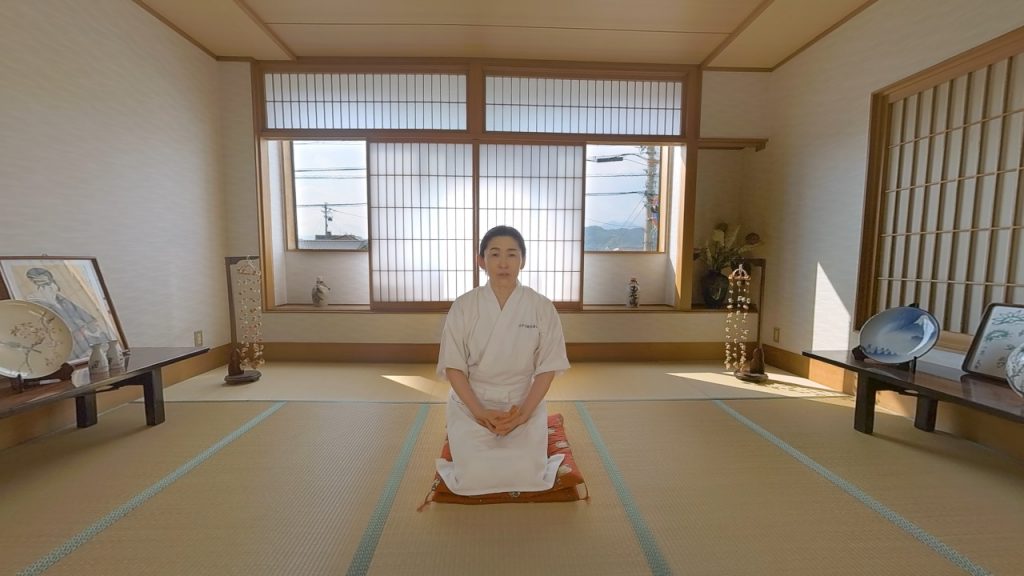
C. R. – And for each chef, each restaurant, we had to adapt our realization. The kitchens are environments with strong requirements, the space is narrow and dense. It was a real challenge to place a 360° camera without disturbing them. Obviously the “macro” camera gives new ideas on what it is possible to do in VR, in the kitchen or in other worlds.
V. A. – Toutes les équipes avec qui nous avons collaboré ont été très bienveillantes et très curieuses de nos dispositifs VR. On a pu travailler ensemble sur la présentation des plats face à la caméra, le dressage pour s’assurer que le point de vue du spectateur était le plus spectaculaire… Nous avions clairement l’impression d’être privilégiés de pouvoir assister à ces instants de création, avec les cheffes en cuisine. Pouvoir capter ces instants, ces cuisines, c’est une vraie chance et on est ravis de pouvoir les diffuser au public ! Si les trois premiers épisodes parviennent à convaincre le public, on espère pouvoir travailler sur une suite—en allant chercher de nouvelles nourritures, de nouveaux portraits, de nouvelles destinations…
https://www.targostories.com/behind-the-dish
Previously…
Decoding XR: SURVIVING 9/11, Victor Agulhon, Chloé Rochereuil (Targo)



Leave a Reply
You must be logged in to post a comment.